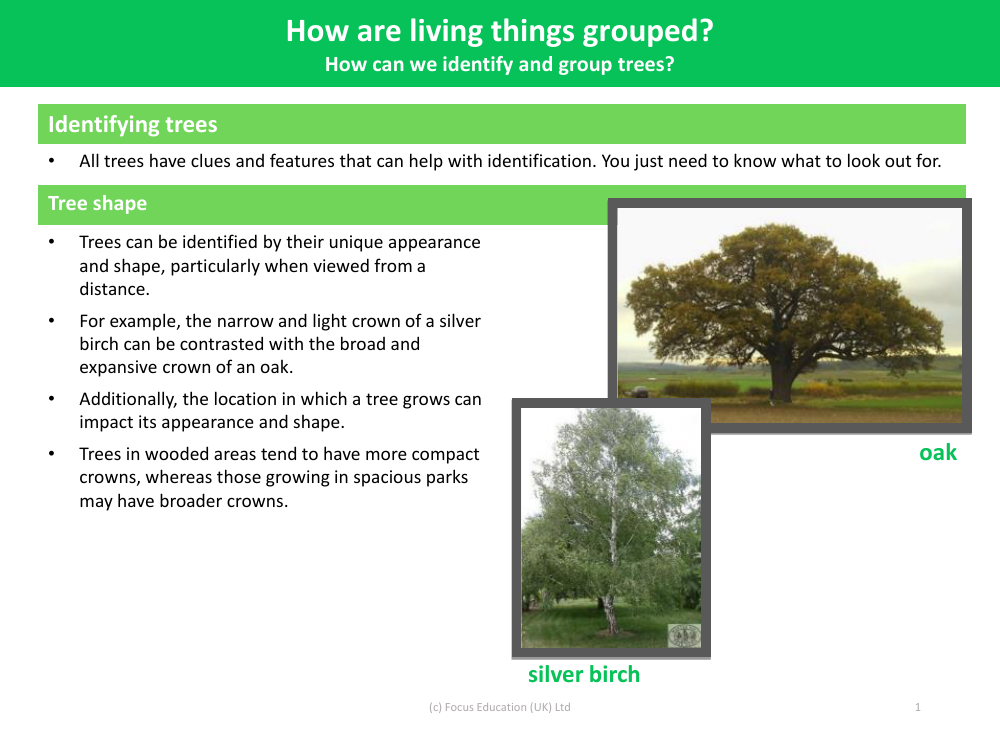Identifying Trees - Info Pack - Grouping Living Things - Year 4

Science Resource Description
A Year 4 educational pack on grouping living things provides a thorough guide on identifying trees by observing their distinctive features. Each tree carries a set of clues that aid in its identification, such as the overall shape, which is often a clear indicator of its species. For instance, the slender and airy crown of a silver birch starkly differs from the wide and dense crown of an oak. The location of a tree influences its shape too, with trees in forests having more compact crowns compared to those in open parks, which may display broader crowns. This can be a fun and educational exercise for children as they learn to distinguish trees from a distance based on their silhouettes.
Another key aspect of tree identification is the bark, which acts as a protective, waterproof layer. Despite a general brown hue, a closer look at a tree's bark can reveal a multitude of unique features, such as texture, colour, and markings. These may include ridges, depressions, flaky peels, or a cracked surface, and can range in colour from greys and whites to reds and greens. Observing the bark from the base to the crown offers a comprehensive view of these variations, which change as the tree matures. In addition to the bark, leaves are vital for identification, especially in spring and summer when they are most visible. Leaves can be simple with a single undivided shape or compound with multiple leaflets. Finally, flowers, fruits, and seeds also provide important identification cues, as some trees bloom only at certain times of the year and feature varied flower shapes and arrangements.



